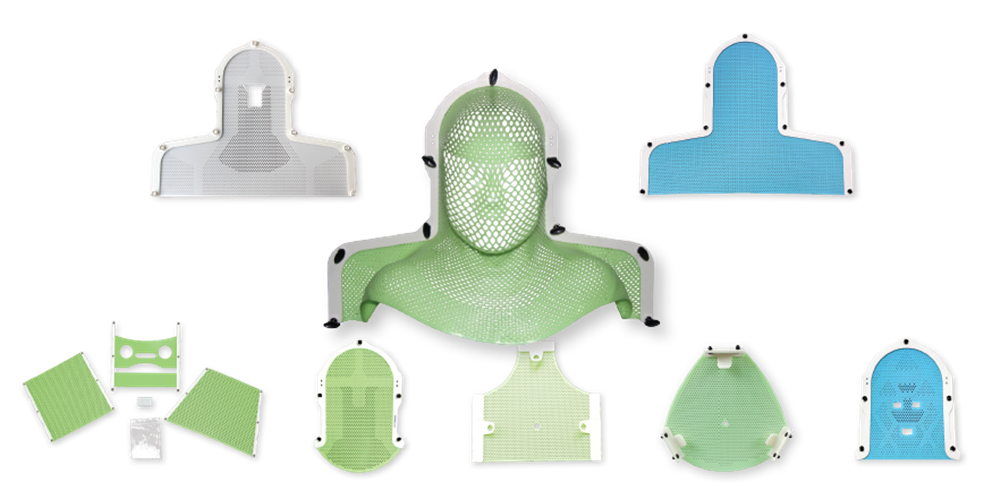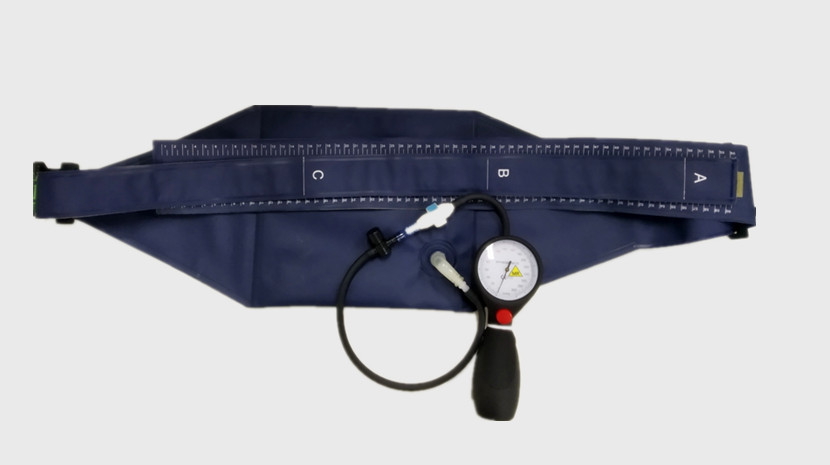
What sets Klarity Masks apart from other brands?
Klarity has been dedicated to creating higher quality thermoplastic since our inception. Klarity masks have less-shrinkage, are less-sticky, and stronger than other mask brands. We provide different types of plastic, each with their own set up characteristics, to fit the needs of all clinics. We now offer four types of thermoplastic: Klarity White™, Klarity Green®, Klarity LiteGreen™, and Klarity Blue™. Each color has been specially formulated to offer different advantages and to work optimally with different frame-types and treatment systems. Learn more about the different types of Klarity Thermoplastics.
How to reduce shrinkage of thermoplastic masks?
To minimize shrinkage, it is important to allow masks to completely cool before removing from the patient. We recommend leaving a mask on for at least 10 minutes. Moist towels can speed the cooling, but this will increase shrinkage. As water evaporates from the surface of a mask, the mask cools more quickly which increases the shrinkage. Masks made in an oven will shrink less, because there is no water evaporation.
What is the best temperature for heating Klarity masks
In both water baths and ovens, an ideal temperature should be maintained between 165-170°F (73-77°C). Lower temperatures can cause uneven molding and inadequate working time. Higher temperatures can cause tackiness, excessive stretching and difficult handling.
What is the heating time of a Klarity mask
Total heating time varies according to the thickness of the mask, heating method, ambient room temperature and the mask’s perforation pattern. Usual times are 1-2 minutes in a water bath, or 3-10 minutes in an oven, depending on the oven model. Be sure that the mask is thoroughly heated at the recommended temperature before removing from the oven or water bath. Masks will become translucent when heated, but an additional 30 seconds to a minute will insure complete and even heating. Learn more about the different types of Klarity Thermoplastics.
What is the purpose of the reinforced perforation patterns
Klarity AccuPerf™ and reinforced masks are designed for the higher stability requirements of IMRT. Reinforcing strips hold firmly while the more open perforation areas allow for comfortable breathing and patient visibility.
What if the mask is too tight?
Shims can be used if necessary, to relieve excessive shrinkage. However, with some Klarity thermoplastics, shims are usually not needed as long as masks are heated at the proper temperature (165˚F in an oven) and allowed to cool completely before being removed from the patient.
How long should the mask cool before being removed from the patient?
We recommend leaving the mask on the patient for at least 10 minutes. This minimizes shrinkage and insures an accurate fit for subsequent treatments.
How to choose the right thickness of Klarity masks?
Thicker (3.2mm) masks will provide the highest stability. However, thinner masks (2.4mm) may have less attenuation and are sometimes preferred. Learn more about the different types of Klarity Thermoplastics.
Will Klarity thermoplastic cause any skin reaction?
Klarity thermoplastic contains no latex and is not known to cause any allergic or skin sensitive reactions.
Can I cut holes into Klarity masks?
Yes. You can use scissors for custom cut-outs in all Klarity masks. We also offer Open Face and Open Eye & Mouth masks in several frame-types as an alternative to cutting masks yourself.
Do masks expire?
All thermoplastics eventually expire. Klarity masks have a shelf life of 3 years. Each Klarity mask has both the manufacture date and the expiration date printed on the label of the product bag for easy reference.
How do I dispose of a Klarity mask?
Klarity mask contain no toxic chemicals or components. They can be safely disposed of with normal hospital or household waste.
Can Klarity masks be used more than once?
All Klarity masks are one-per-patient. Masks are not easily disinfected, and body fluids can be unwittingly transferred between patients. However, a Klarity mask has memory and will return to its original flat shape if reheated, so masks can technically be reheated and formed again if a mistake is made during the molding process. However, remolding a mask can weaken the thermoplastic and may cause instability and is extremely difficult to execute, particularly with solid frame-styles.













